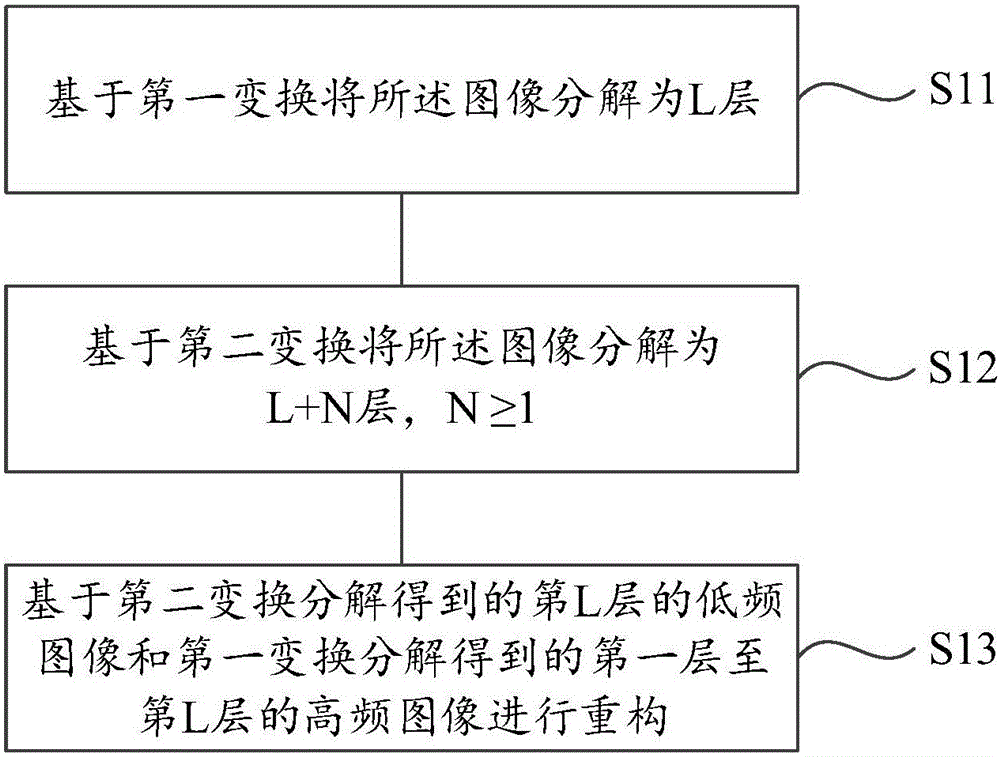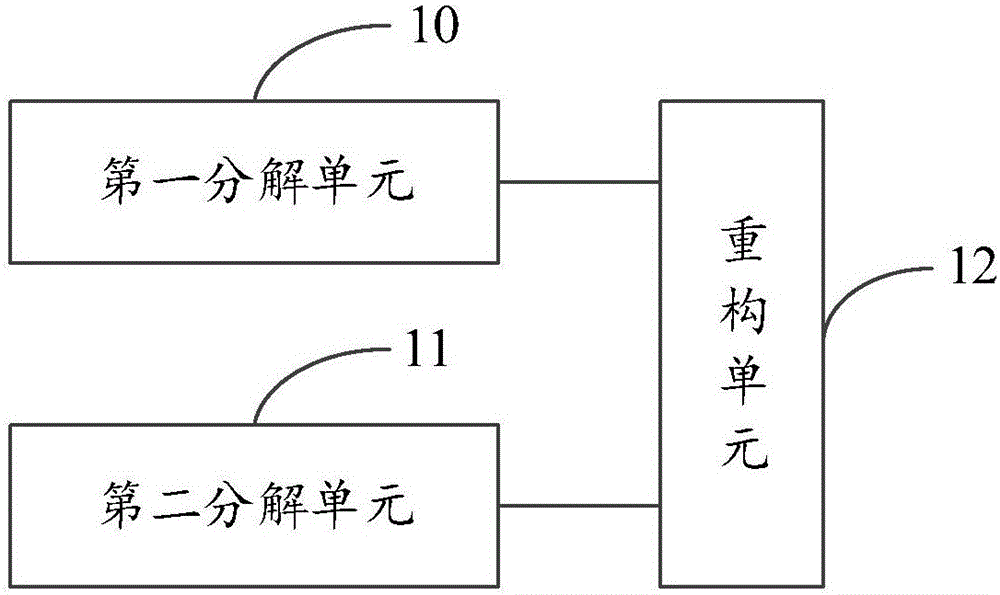Image enhancement method and device
An image enhancement and image technology, which is applied in the field of image processing, can solve problems such as missed diagnosis, low image quality, and inconvenient diagnosis for doctors, and achieve the effects of reducing the probability of missed diagnosis or misdiagnosis, enhancing fine details and edges, and improving quality
- Summary
- Abstract
- Description
- Claims
- Application Information
AI Technical Summary
Problems solved by technology
Method used
Image
Examples
Embodiment 1
[0051] Execute S11: Decompose the image into a pyramid through Laplace transform to obtain high-frequency images and low-frequency images of each layer of the image. For example, if the image is to be decomposed into three layers using Laplace transform, the image is firstly decomposed into the low-frequency image of the first layer and the high-frequency image of the first layer, and then the The low-frequency image is decomposed into the low-frequency image of the second layer and the high-frequency image of the second layer, and then the low-frequency image of the second layer is decomposed into the low-frequency image of the third layer and the high-frequency image of the third layer. In this embodiment, the image is decomposed into several layers through the Laplace transform, which can be determined according to the actual size of the image and the actual needs in the processing process. Generally speaking, the Laplace transform is used to process the image. When the pyr...
Embodiment 2
[0063] In this embodiment, the image is decomposed into L layers (first layer to L layer) by Laplace transform, and the image is decomposed into L+N layers (first layer to L+th layer) by wavelet transform. N layers), similar to that in Embodiment 1, and will not be repeated here. The difference between this embodiment and Embodiment 1 is that when reconstructing the high-frequency images from the first layer to the L-th layer obtained by Laplace transform decomposition and the L-th layer low-frequency image obtained by wavelet transform decomposition, In order to further enhance the contrast of the reconstructed image, in this embodiment, the high-frequency images from the first layer to the Lth layer obtained by decomposing the Laplace transform are respectively enhanced. Specifically, the first layer to the Lth layer can be respectively enhanced. The high-frequency images of the L layer are enhanced linearly or nonlinearly. The update of the L-th layer low-frequency image o...
Embodiment 3
[0066] In this embodiment, the image is decomposed into L layers (first layer to L layer) by Laplace transform, and the image is decomposed into L+N layers (first layer to L+th layer) by wavelet transform. N layer), update the low-frequency image of the L-th layer obtained by Laplace transform decomposition with the low-frequency image of the L-th layer decomposed by the wavelet transform, and use the updated low-frequency image of the L-th layer to sequentially update the L-1th layer to the L-th layer. The corresponding updating of the low-frequency images of the first layer is similar to that in Embodiment 1, and will not be repeated here. The difference between this embodiment and Embodiment 1 and Embodiment 2 is that in this embodiment, it is considered that there will be oscillation artifacts when reconstructing images of various layers obtained by wavelet transform and Laplace transform decomposition. The quality of the image is affected. Therefore, in this embodiment, t...
PUM
 Login to View More
Login to View More Abstract
Description
Claims
Application Information
 Login to View More
Login to View More - Generate Ideas
- Intellectual Property
- Life Sciences
- Materials
- Tech Scout
- Unparalleled Data Quality
- Higher Quality Content
- 60% Fewer Hallucinations
Browse by: Latest US Patents, China's latest patents, Technical Efficacy Thesaurus, Application Domain, Technology Topic, Popular Technical Reports.
© 2025 PatSnap. All rights reserved.Legal|Privacy policy|Modern Slavery Act Transparency Statement|Sitemap|About US| Contact US: help@patsnap.com


